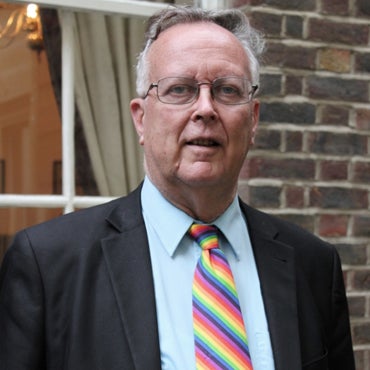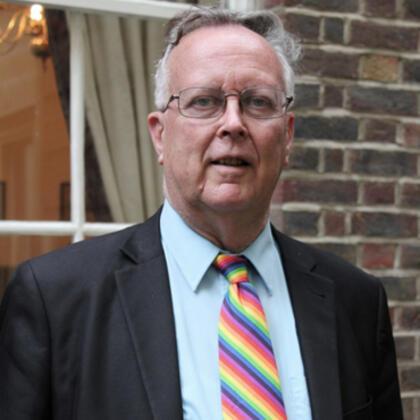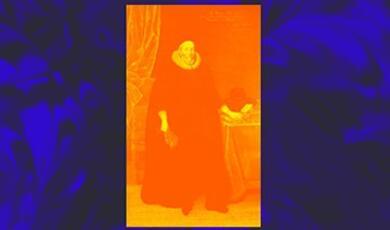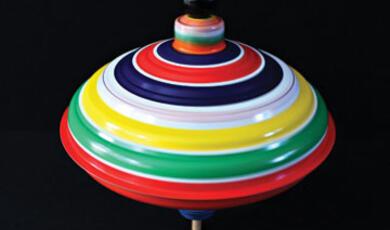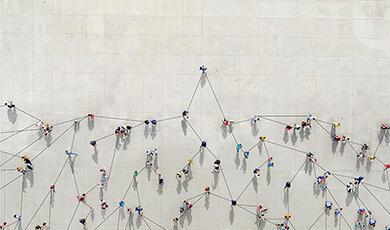Who invented algebra?
Share
- Details
- Transcript
- Audio
- Downloads
- Extra Reading
Arabic mathematicians embraced the mathematics of Ancient Greece and India. What did they do, and how did their achievements influence Europe in the Middle Ages? We trace the story up to the establishment of universities, the development of perspective in art, and Fibonacci's problem of the rabbits. London Mathematical Society - http://www.lms.ac.uk/
Download Transcript
WHO INVENTED ALGEBRA?
Professor Robin Wilson
Introduction
In this lecture I’ll continue my survey of the history of mathematics by telling you about mathematical instruction in Baghdad and other places. Last year we looked at the multi-cultural origins of mathematics – the Egyptians and Mesopotamians, the Greeks, the Chinese and Indians and the Mayans. Today we’ll continue the story by looking at Arabic (or Islamic) mathematics, and how it found its way into Europe. My next two lectures will develop the European story through the Renaissance and into the sixteenth and seventeenth centuries.
Here’s a summary of the Islamic part of my lecture. In particular, we’ll see the contributions of several influential mathematicians – al-Khwarizmi, al-Biruni, al-Haitham, Omar Khayyam, al-Tusi, al-Kashi and Ulugh Beg. For convenience I’ll use Western dates rather than Islamic ones – in this context, the Victorian mathematician Augustus De Morgan once remarked that: Dates are of as much importance to an historian as to an Arab. The Arab, however, has to dry his; the historian’s are as dry as possible from the outset.
We’ll then see how Islamic mathematics found its way into Europe, with the work of Gerbert of Aurillac, Ramon Lull and Fibonacci. Finally I’ll describe the founding of the Universities, taking Oxford University as a special case study.
Islamic mathematics
The period from 750 to 1400 was an important time for the development of mathematics, since it led to an awakening of interest in Greek and Hindu culture. Islamic scholars seized on the ancient texts, translating them into Arabic and extending and commenting on them. Baghdad was not only on the trade routes for silk and spices, but also for these works of scholarship – the writings of the Greek geometers and the contributions of the Indian mathematicians – in particular the so-called Hindu-Arabic positional method of counting.
Before continuing, we’ll need to decide what term to use for this period of development. The term ‘Arabic mathematics’ was used for many years, because Arabic is the language in which much of it was written. However, some of the most important writings were in Persian and other languages. These days we tend to prefer the term ‘Islamic mathematics’, since it was in the Islamic world where it was developed – but this is also problematic since there was also important work carried out by Jewish mathematicians and others.
The Islamic scholars were interested in all aspects of mathematics. In particular, they created maps of the world – here are two world-maps from around 830 and 1154.
The next three centuries were also to be fertile years for the development of astronomy as the Islamic astronomers used and developed the astronomical and navigational instruments of the day. These included the astrolabe, used for observing the positions and altitudes of celestial bodies and for telling the time of day. Here’s a picture of Islamic astronomers at work with their astrolabes and other instruments, and this map shows how widespread were their observatories.
Unlike the Greek period, we have several primary sources for Islamic mathematics. Last year I showed you an Arabic manuscript from 888 AD – it’s the earliest surviving source of Euclid’s Elements. I also showed you an Archimedes palimpsest, where the ‘hidden work’ that has been written over is Archimedes’s The Method.
In Baghdad the caliphs actively promoted mathematics and astronomy – in particular, Caliph Harun al-Rashid and his son al-Ma’mun established and supported the House of Wisdom’, a scientific academy with its own extensive library and observatory. One of the earliest scholars at the House of Wisdom was Muhammad ben Musa al-Khwarizmi (c.780–850), the author of a number of influential treatises, who is remembered primarily for two books on arithmetic and algebra. Neither was a work of great originality, but both had great influence in the West when translated into Latin in the twelfth century – in particular, his Arithmetic helped to spread the Hindu decimal place-value system throughout Christian Europe. Indeed, his name, transmuted into ‘algorism’ was frequently used in Europe to mean ‘arithmetic’, and we now use the word ‘algorithm’, named after him, to refer to a step-by-step procedure for solving a problem.
The title of his algebra book is Kitab al-jabr wal-muqabala: The compendious book on calculation by completion [al-jabr] and reduction [al-muqabalah]. This is the origin of the word ‘algebra’; the word ‘al-jabr’ essentially refers to the operation of transposing a term from one side of an algebraic equation to the other.
The ‘Algebra’ commences with a lengthy account of linear and quadratic equations. Since negative numbers were not yet considered meaningful, these equations were split into six types, corresponding (in modern notation) to the six forms ax 2 = bx, ax 2 = b, ax = b, ax 2 + bx = c, ax2 + c = bx and ax 2 = bx + c, where a, b and c are postive constants. He then proceeded to solve instances of each type, such as x 2 + 10x = 39, using a geometrical form of ‘completing the square’.
Al-Biruni (973–1055) was an outstanding intellectual figure who contributed over one hundred works, primarily on arithmetic and geometry, astronomy, geography and the calendar. Writing on trigonometry, he was one of the first mathematicians to investigate the tangent, cotangent, secant and cosecant functions.
Influential among the works of the time, especially when translated into Latin during the Renaissance, were those of ibn al-Haitham (965–1039). Known in the west as Alhazen, he was a geometer whose main contributions were to the study of optics. A celebrated problem is ‘Alhazen’s problem’, which asks: at which point on a spherical mirror is light from a given point source reflected into the eye of a given observer? An equivalent formulation is: at which point on the cushion of a circular billiard table must a cue ball be aimed so as to hit a given target ball?
Omar Khayyam (1048–1131) was a mathematician and poet who wrote on the binomial theorem and on geometry. In algebra he presented the first systematic classification of cubic equations and a discussion of their solution; such equations were not to be solved in general until the sixteenth century. He’s known in the west mainly for his collection of poems known as the Rubaiyat. Omar Khayyam also publicly criticised an attempted proof by Alhazen of Euclid’s so-called ‘parallel postulate’.
A later unsuccessful attempt to prove this postulate was given by the distinguished Persian mathematician Nasir al-Din al-Tusi (1201–74). Al-Tusi constructed the first modern astronomical observatory and wrote influential treatises on astronomy, logic, theology and ethics – here are two extracts from his edition of Euclid’s Elements. His contributions to trigonometry included the sine rule for triangles: if a, b and c are the sides of a triangle, opposite to the angles A, B and C, then
a /sin A = b/sin B = c/sin C.
By the fifteenth century Samarkand in central Asia had become one of the greatest centres of civilisation. The Persian mathematician and astronomer Jamshid al-Kashi (d. 1429) had made extensive calculations with decimal fractions and established a notation for them, using a vertical line to separate the integer and fractional parts. A prodigious calculator, he determined p to 16 decimal places and obtained a very precise value for the sine of 1°, from which many other trigonometrical values can be determined.
Al-Kashi’s patron was the Turkish astronomer Ulugh Beg (1394–1449), whose observatory in Samarkand contained a special sextant, the largest of its type in the world. Using al-Kashi’s accurate value for sin 1°, Ulugh Beg constructed extensive tables for the sine and tangent of every angle for each minute of arc to five sexagesimal places.
From Baghdad to Europe
During the eighth and ninth centuries, the Islamic world spread along the northern coast of Africa and up through southern Spain and Italy.
During the Middle Ages, Córdoba became the scientific capital of Europe. Islamic decorative art and architecture spread throughout southern Spain and Portugal; celebrated examples include the magnificent arches in the Córdoba Mezquita (mosque), the Alcazar in Seville, and the variety of geometrical tiling patterns in the Alhambra in Granada. The Spanish geometer and astronomer al-Zarqali (d. 1100) lived in Toledo and Córdoba and produced several important works, including a set of trigonometrical tables, chiefly for use in astronomy. He was an instrument maker who constructed a number of astrolabes.
Medieval Europe
The period from 500 to 1000 in Europe is known as the Dark Ages. The legacy of the ancient world was almost forgotten, schooling became infrequent, and the general level of culture remained low. Mathematical activity was generally sparse, but included writings on the calendar and on finger reckoning by the Venerable Bede (around 700 AD), and an influential book of Problems for thequickening of the mind by Alcuin of York, educational adviser to Charlemagne, about fifty years later.
Revival of interest in mathematics began with Gerbert of Aurillac (938–1003), who trained in Catalonia and is believed to be the first to introduce the Hindu-Arabic numerals to Christian Europe, using an abacus that he’d designed for the purpose; he was crowned Pope Sylvester II in 999.
Hindu-Arabic methods of calculation were also used by Fibonacci (Leonardo of Pisa) in his Liber abaci [Book of calculation] of 1202. This celebrated book contained many problems in arithmetic and algebra, including the celebrated problem of the rabbits that leads to the ‘Fibonacci sequence’ 1, 1, 2, 3, 5, 8, 13, …, in which each term after the first two is the sum of the previous pair.
The Catalan mystic Ramon Lull (c.1232–1316) believed that all knowledge can be obtained as mathematical combinations of a fixed number of ‘divine attributes’. Lull’s ideas spread through Europe, and influenced later mathematicians for many centuries, including Mersenne and Leibniz.
The Universities
The renaissance in mathematical learning during the Middle Ages was largely due to three factors: the translation of Arabic classical texts into Latin during the twelfth and thirteenth centuries, the establishment of the earliest European universities, where this translation can took place, and the invention of printing. The first of these made the works of Euclid, Archimedes and other Greek writers available to European scholars, the second enabled groups of like-minded scholars to meet and discourse on matters of common interest, while the last enabled scholarly works to be available at modest cost to the general populace.
The first European university was founded in Bologna in 1088, and Paris and Oxford followed shortly after.
In Oxford, by the beginning of the thirteenth century, the University had a recognised head who in 1214 was given the official title of ‘Chancellor’. It was Robert Grosseteste, shown here on one of his manuscripts. Bishop Grosseteste taught at Oxford in the early 13th century, and founded the tradition of scientific thought in medieval Oxford. He was particularly interested in geometry and optics, and wrote in praise of mathematics as follows:
The usefulness of considering lines, angles and figures is the greatest, because it is impossible to understand natural philosophy without them... By the power of geometry, the careful observer of natural things can give the causes of all natural effects...
Grosseteste’s most famous admirer was the Franciscan friar Roger Bacon, who came up to Oxford very young and took holy orders when only 19. He then went to Paris for six years, before returning to teach in Oxford. Most of his money was spent on scientific manuscripts and instruments, and he wrote on scientific issues – but unfortunately, this led him into conflict with the Church in Rome, and he was imprisoned for his views. Like Grosseteste, he believed that:
He who knows not mathematics cannot know the other sciences nor the things of this world. And those who have no knowledge of mathematics do not perceive their own ignorance and so do not look for a cure.
Bacon’s study was on Folly Bridge – an early observatory which soon became a place of pilgrimage for scientists. As Samuel Pepys wrote in his diary centuries later: So to Friar Bacon’s study: I up and saw it, and gave the man a shilling. Oxford mighty fine place.
Another Oxford scholar, just a little later, was Richard of Wallingford, whom you saw earlier dividing a disc. He devised mathematical instruments for use in astronomy and navigation, such as his famous ‘albion’, shown here in the manuscript of his Treatise on the albion. Here’s the actual object, showing the signs of the zodiac.
By the beginning of the fourteenth century, scholars had already started to organise themselves into colleges, and three colleges were already in existence.
Merton College quickly became pre-eminent in scientific studies, and the Merton School soon became famous throughout Europe. Members of this School tried to treat mathematically all sorts of natural phenomena, such as heat, light, forces, density and colour, and even tried to quantify knowledge, grace and charity.
Included in the Merton School was the astronomer Simon Bredon, who’d been at Balliol, but found too much philosophy there and migrated to Merton. Here are his notes on square numbers in an Oxford almanack of 1344.
Another Merton scholar, William Rede, constructed astronomical tables for the Oxford meridian. Here are some of his tables, predicting planetary motion from 1340 to 1600.
Until about 1600, the curriculum was in two parts. The first part, studied by those aspiring to a Bachelor’s degree, was based on the ancient ‘trivium’ of grammar, rhetoric and logic (usually Aristotelian). The second part, leading to a Master’s degree, was based on the ‘quadrivium’, the Greek mathematical arts of arithmetic, geometry, astronomy and music; the works studied would have included Euclid’s Elements and Ptolemy’sAlmagest.
Originating some 2000 years earlier with the Pythagoreans, it consisted of two parts – the trivium and the quadrivium. In Oxford the trivium was a 4-year course on grammar, rhetoric and dialectic, leading to a BA degree. If you then wished to become an MA, you’d have to spend a further three years studying the quadrivium, consisting of:
arithmetic – mainly involving computing the date of Easter and other dates in the Church calendar;
astronomy – including the works of Ptolemy (in particular, his Almagest) and other Greek writers, but also having links with astrology;
music – based on Pythagorean ideas of musical intervals, in which each interval corresponds to a ratio of numbers;
and geometry including some geography, and parts of the first two books of Euclid’s Elements.
An interesting name that crops up here is Geoffrey Chaucer (1342-1400), whom we know best as the author of the Canterbury tales. However, he also wrote on mathematical instruments, and his 1393 Treatise on the astrolabe was one of the earliest science books to appear in English.
The astrolabe was one of many instruments developed around this time, and several Oxford colleges had such instruments named after them. I rather like the Merton astrolabe. Incidentally, there’s a nice story about a Merton student called Robert Dobbys using his astrolabe in 1420:
One night after a deep carouse, when on his way from Carfax to Merton, he found it advisable to take his bearings. Whipping out his astrolabe he observed the altitude of the stars, but, on getting the view of the firmament through the sights, he fancied that sky and stars were rushing down upon him. Stepping quickly aside he quietly fell into a large pond. ‘Ah, ah’, says he, ‘now I’m in a nice soft bed I will rest in the Lord.’ Recalled to his senses when the cold struck through, he rose from the watery couch and proceeded to his room where he retired to bed fully clothed. On the morrow, in answer to kind inquiries, he denied all knowledge of the pond.
We conclude our discussion of Oxford University with the most important of the Merton Scholars was Thomas Bradwardine, the greatest English mathematician of the fourteenth century. He wrote several influential books, including his Geometria speculative, and his discourses were so learned that he was known as Dr Profundus. He eventually became Archbishop of Canterbury in 1349, but died of the Black Death only a few weeks later. He wrote:
Mathematics reveals every genuine truth, for it knows every hidden secret, and bears the key to every subtlety of letters. Whoever then has the effrontery to study physics while neglecting mathematics should know from the start that he will never make his entry through the portals of wisdom.
© Professor Robin Wilson, Gresham College, 5 October 2005
This event was on Wed, 05 Oct 2005
Support Gresham
Gresham College has offered an outstanding education to the public free of charge for over 400 years. Today, Gresham plays an important role in fostering a love of learning and a greater understanding of ourselves and the world around us. Your donation will help to widen our reach and to broaden our audience, allowing more people to benefit from a high-quality education from some of the brightest minds.


 Login
Login
